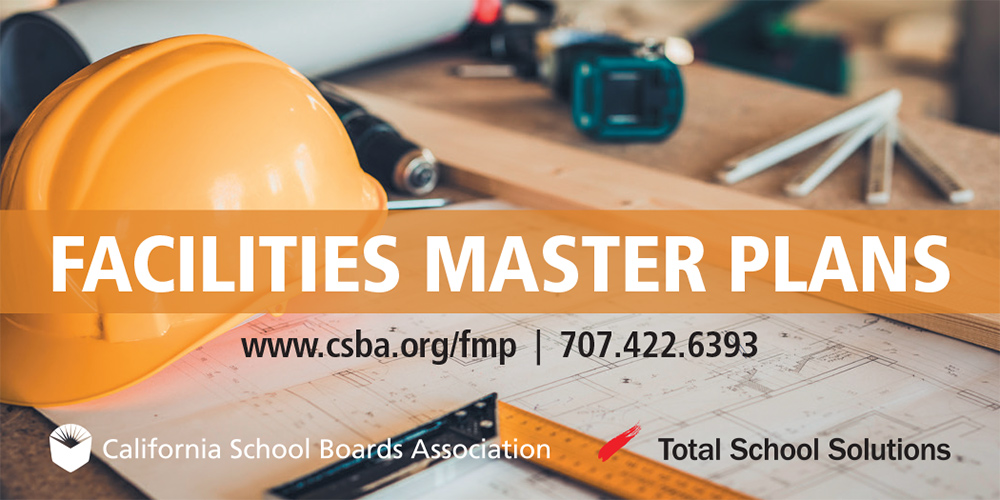On June 29, Gov. Gavin Newsom signed a state budget that largely reflected the budget proposal adopted by the Legislature earlier in June — but with some important modifications that pose concern for local educational agencies. The inclusion of provisions that were not present or disclosed in earlier summaries reinforced the wisdom of CSBA’s decision to avoid a full endorsement of any budget deals before the exact language of the terms was available. Overall, the agreement reflects a two-year plan to balance the state budget and leaves $11 billion in state general fund reserves for future budget challenges.
“This budget agreement is better than the cuts the education community endured during the Great Recession and it includes some improvements over both the Governor’s January Budget and May Revise proposals,” said CSBA CEO & Executive Director Vernon M. Billy. “Still, there are a few ‘rotten apples’ in the deal that CSBA is analyzing closely, specifically a much narrower version of the Governor’s Proposition 98 maneuver, changes to the Prop 98 certification process and a reliance on optimistic state revenue projections that may not materialize.”



There were 5,837,690 TK-12 students enrolled in 2023–24, down just 0.25 percent from 5,852,544 in 2022–23. Although declining enrollment has been an issue for the past several years, the state saw the steepest decline in two decades, at a nearly 3 percent drop from 6.16 million to 6 million, during the pandemic in 2020–21. Enrollment peaked at more than 6.3 million students in 2004.

Troy Flint | tflint@csba.org
Editorial Director:
Kimberly Sellery | ksellery@csba.org
Marketing Director:
Monica Griffis | mgriffis@csba.org
Staff Writers and Contributors:
Alisha Kirby | akirby@csba.org
Heather Kemp | hkemp@csba.org
Tracy Rogers-Tryba | trogers-tryba@csba.org
Kristin Lindgren-Bruzzone | klindgren-bruzzone@csba.org
Sally Mandujan | smandujan@csba.org
Director of Graphic Design & Branding:
Kerry Macklin | kmacklin@csba.org
Senior Graphic Designer:
Amanda Moen | amoen@csba.org
President:
Albert Gonzalez | Santa Clara USD
President-elect:
Bettye Lusk | Monterey Peninsula USD
Vice President:
Debra Schade | Solana Beach SD
Immediate Past President:
Susan Markarian | Pacific Union ESD
CEO & Executive Director:
Vernon M. Billy
News and feature items submitted for publication are edited for style and space as necessary.

President’s Message: Albert Gonzalez
Our school administrators spend so much time preparing and submitting reports to the state and feds, that — part-icularly in small school districts — it can interfere with their ability to create a safe and productive environment where students are learning at high levels. This is unacceptable, especially when many of the reports are redundant or it’s unclear what purpose they serve. In fact, there are so many mandates for LEAs that not even the California Department of Education (CDE) knows how many are required.
Like many states, California is experiencing a teacher shortage that has reached alarming levels, leaving school districts and county offices of education with high vacancy rates and underprepared teachers, while forcing them to rely on substitutes, increase class sizes and assign teachers outside their areas of training. These scenarios hurt all pupils and disproportionately impacts low-income, minority and English learner students.

In districts and county offices of education across California, student board members are assuming increasingly pivotal roles in governance, serving as vital conduits between the student body and the decision-making process. To ensure these representatives effectively fulfill their duties, it is essential that they receive comprehensive training and support from the outset.
Upon selection, student board members should be promptly oriented to the governance process. This can be achieved through meetings with the superintendent or board president, where they can gain insight into the board’s functions, the governance team relationship and how they can contribute to the decision-making process. Reviewing meeting agendas and procedures equips student board members with the necessary tools to engage meaningfully in discussions and votes.
“The REPD team is committed to providing CSBA members with timely and relevant resources,” said Senior Director Mary Gardner Briggs. “This overview of the reporting requirements is a visual way of communicating concerns our members have been raising, and we already have reports of this document’s use in local and statewide advocacy with legislators.”
School boards entering the 2024–25 academic year are facing perhaps the most significant fiscal headwinds since the Great Recession. Addressing these challenges will require strong board leadership and a close partnership with employee bargaining units. That means negotiating.
Negotiating in the current economic climate is difficult. Emotions and rhetoric are ratcheted up, and the increased public interest creates a veritable minefield for board members both inside and outside their meetings. These difficulties are doubled for newer board members, who are often learning California’s complicated negotiating rules at the same time.

Homeschooled for most of her life and subjected to years of abuse and neglect, Westover described the alienation she felt attending public school for the first time in her senior year of high school. Newly separated from her family of origin, she told the crowd that choir class was the only part of the day where she was able to feel a sense of belonging. Led by a competent and inspiring teacher credentialed in the arts, learning to sing in harmony with peers was the one part of the day where she felt in sync with others. It was that sense of connectedness that gave her the presence of mind to more fully access core instruction and curriculum.
CSBA’s May 30 webinar, “Laying the Foundation for a Successful Instructional Materials Adoption: School Board Strategies,” featured expert panelists providing an overview of the state’s instructional materials adoption process, requirements and guidance for local educational agencies, information on understanding current context and minimizing conflict during the selection period, and trustee perspectives as well as a Q&A. Instructional materials can include textbooks, technology-based materials and other educational tools and tests.
“This is a complex and multifaceted process, but school boards are really essential,” said Julie Maxwell-Jolly, an education research and policy professional and former senior director of Policy and Programs at CSBA.

Since the adoption of California’s new Mathematics Framework, the Rural Math Collaborative (RMC) has made significant strides in its efforts to improve math education in small, rural local educational agencies.
Led by the Lake and Butte county offices of education (COEs) in partnership with the California Collaborative for Educational Excellence, the RMC comprises 20 COEs working to build high-quality professional development and coaching, professional learning networks (PLN) focused on mathematics instruction, and interventions based on the specific needs faced by small, rural and isolated support providers.
Attention: For more information about events, visit www.csba.org/TrainingAndEvents.









